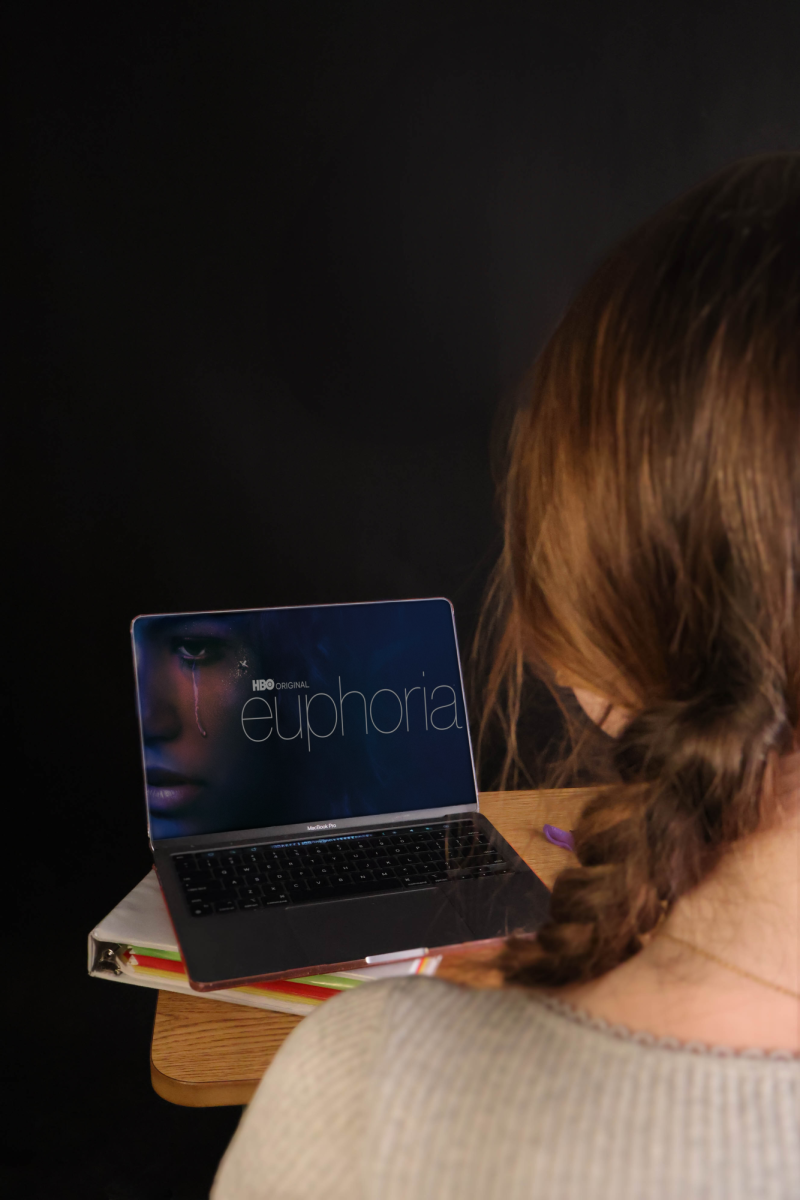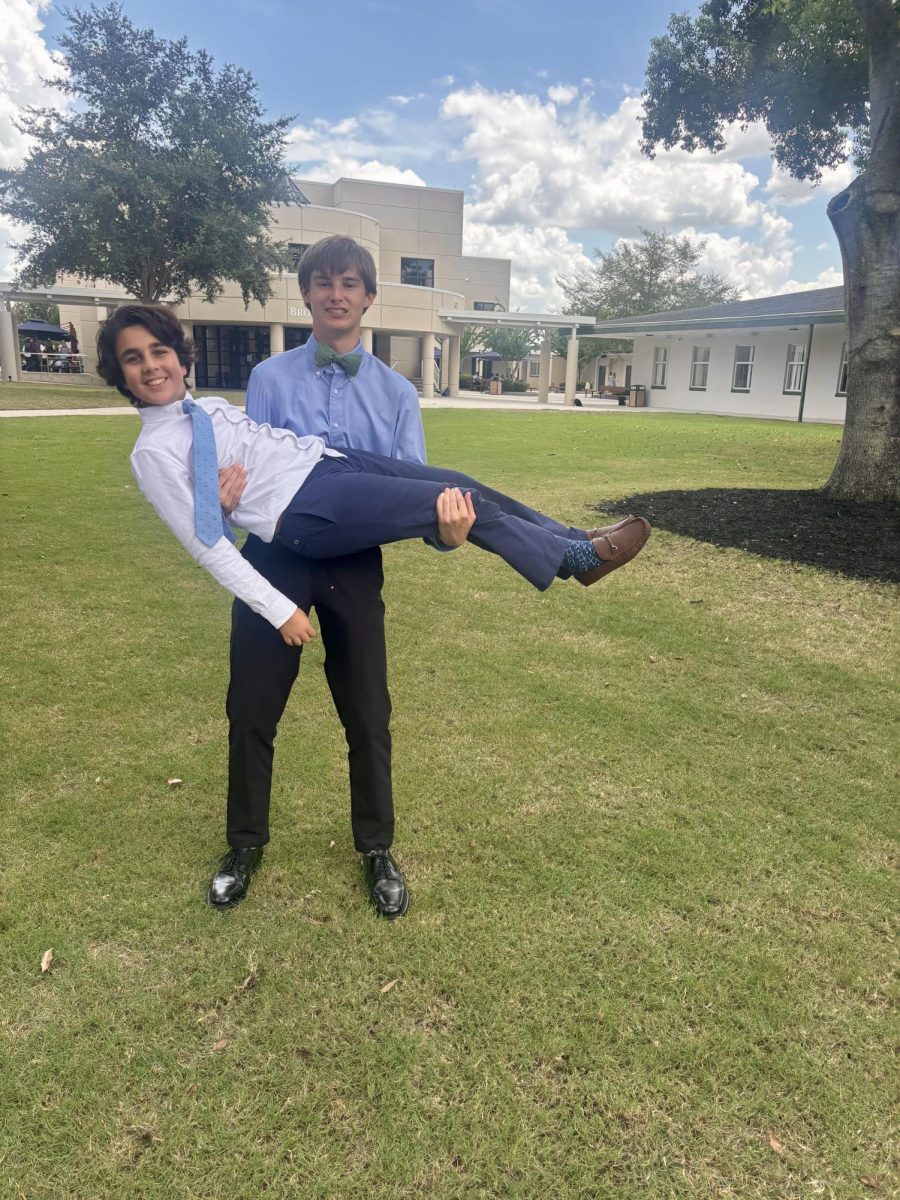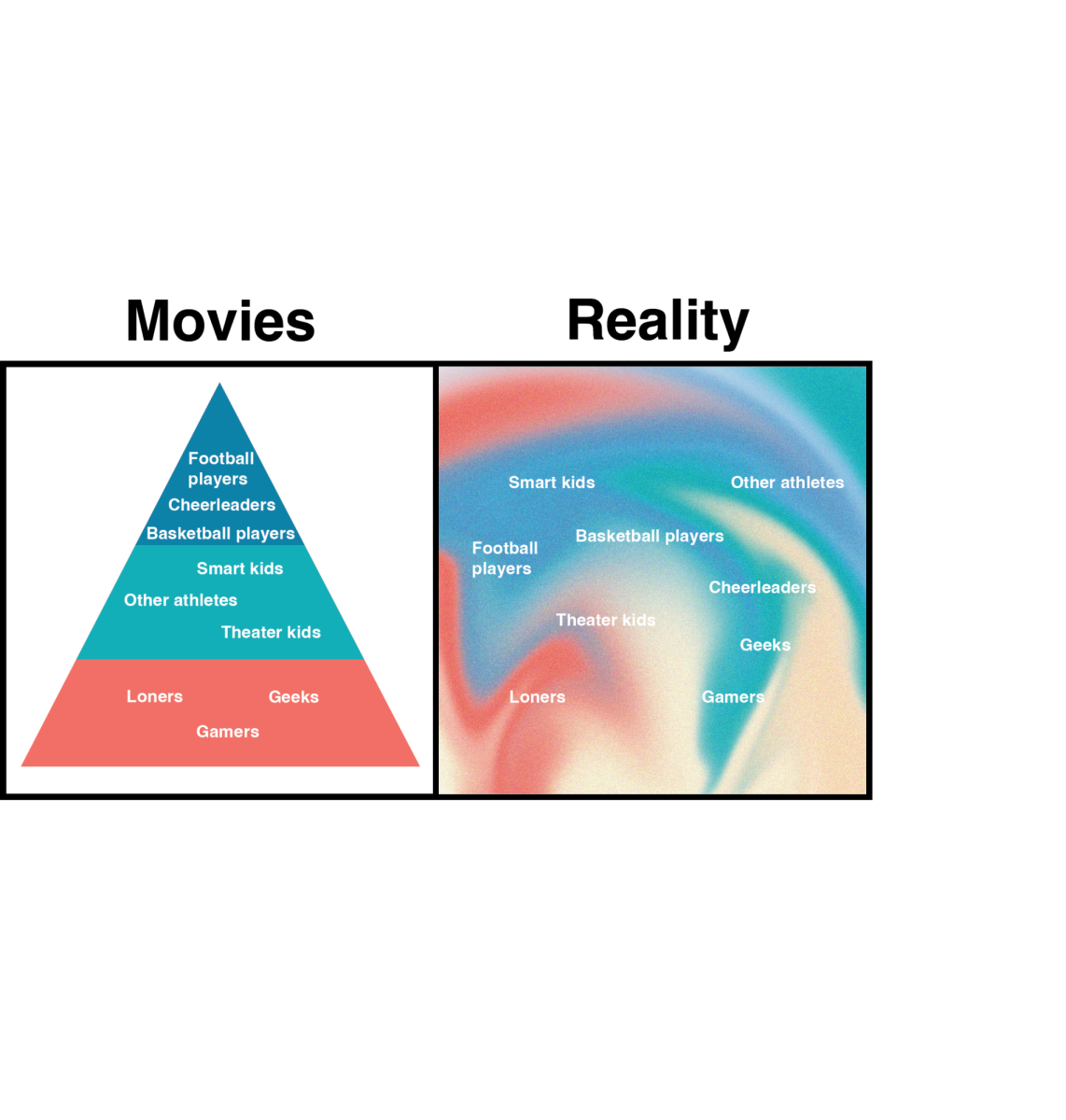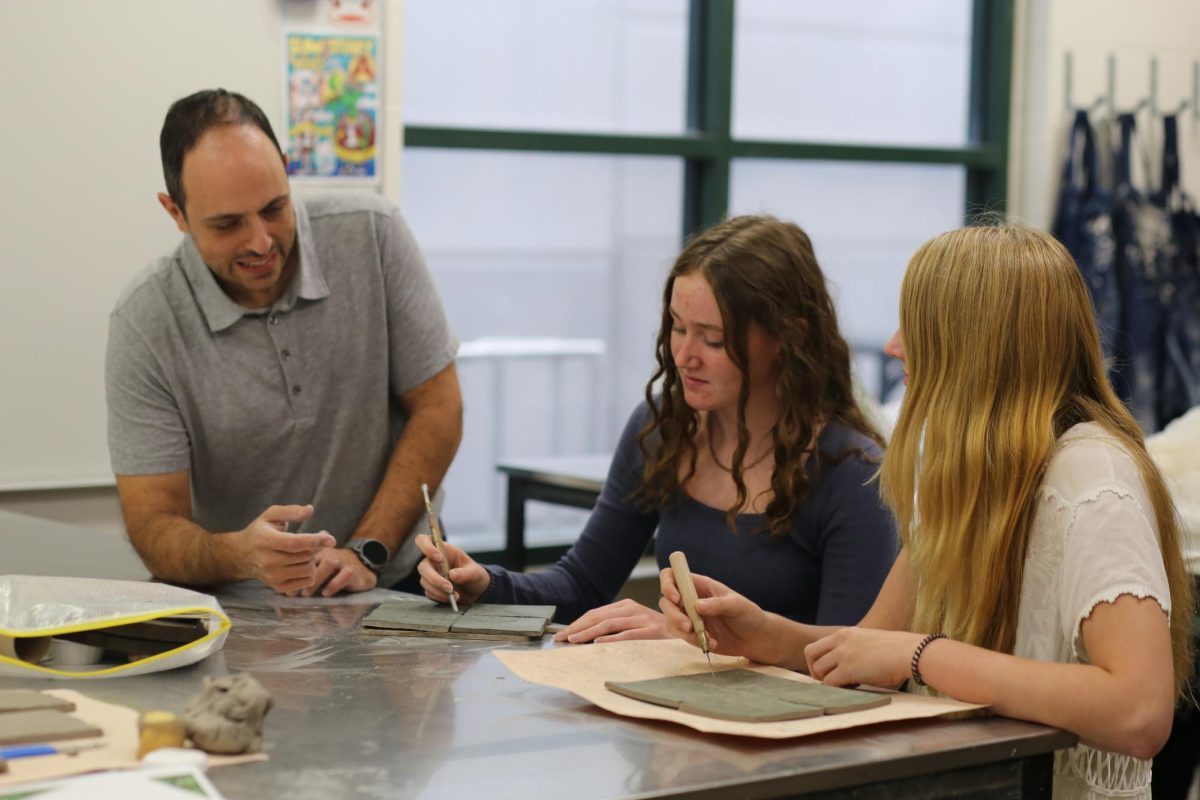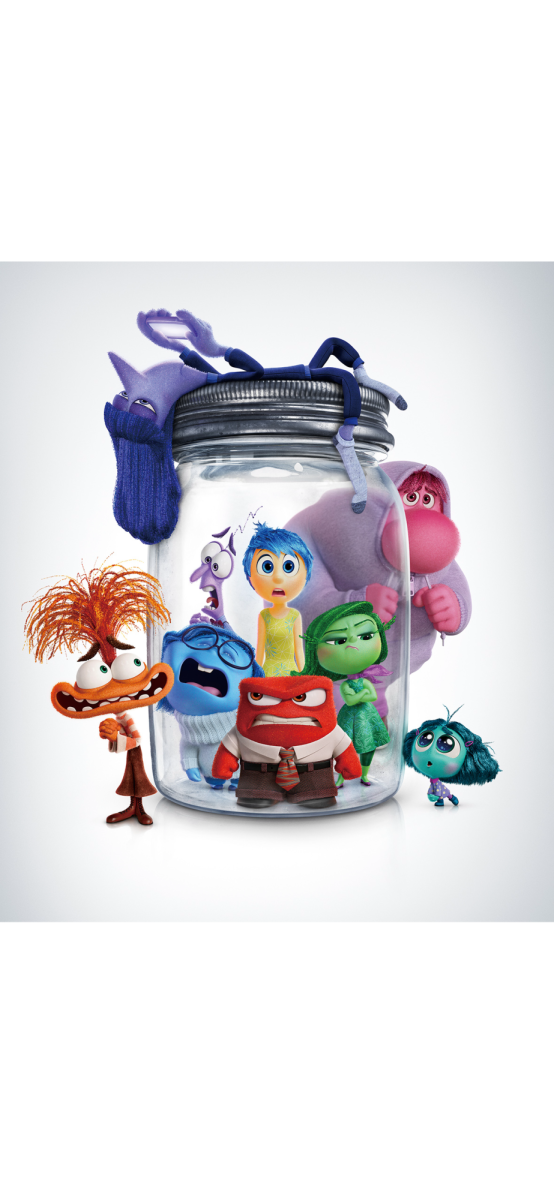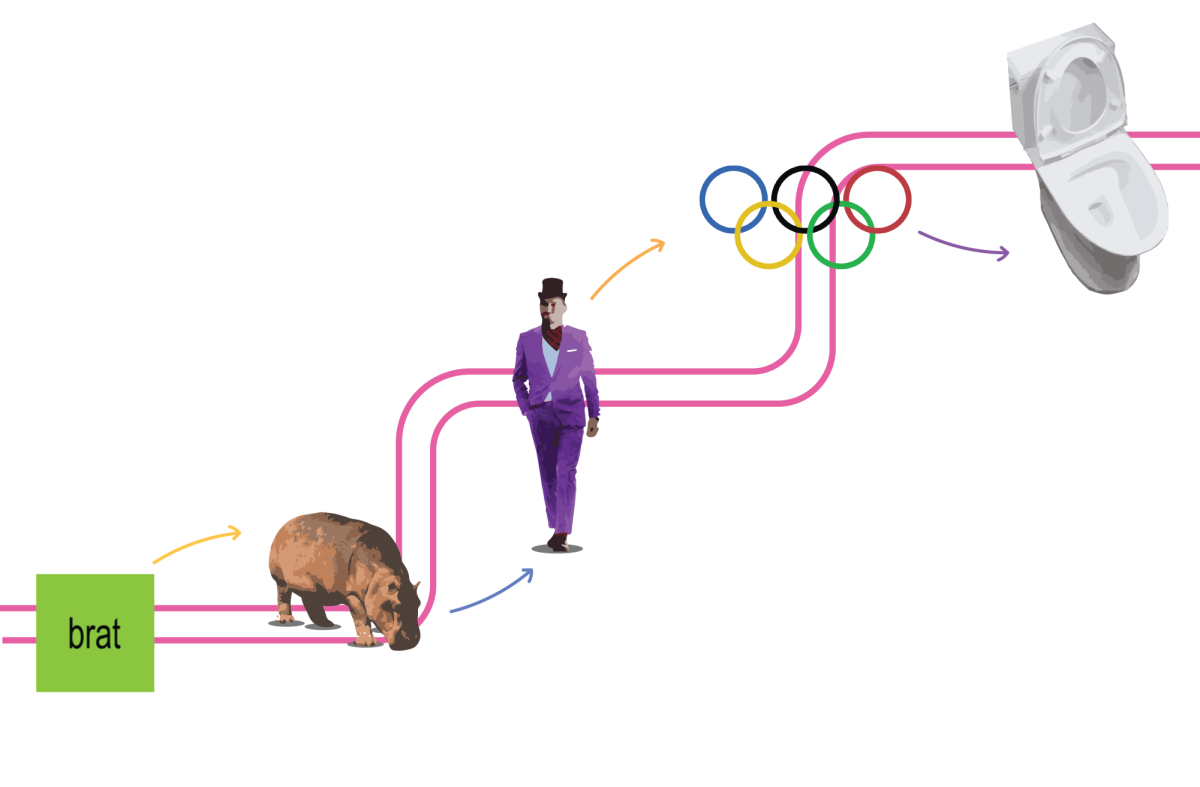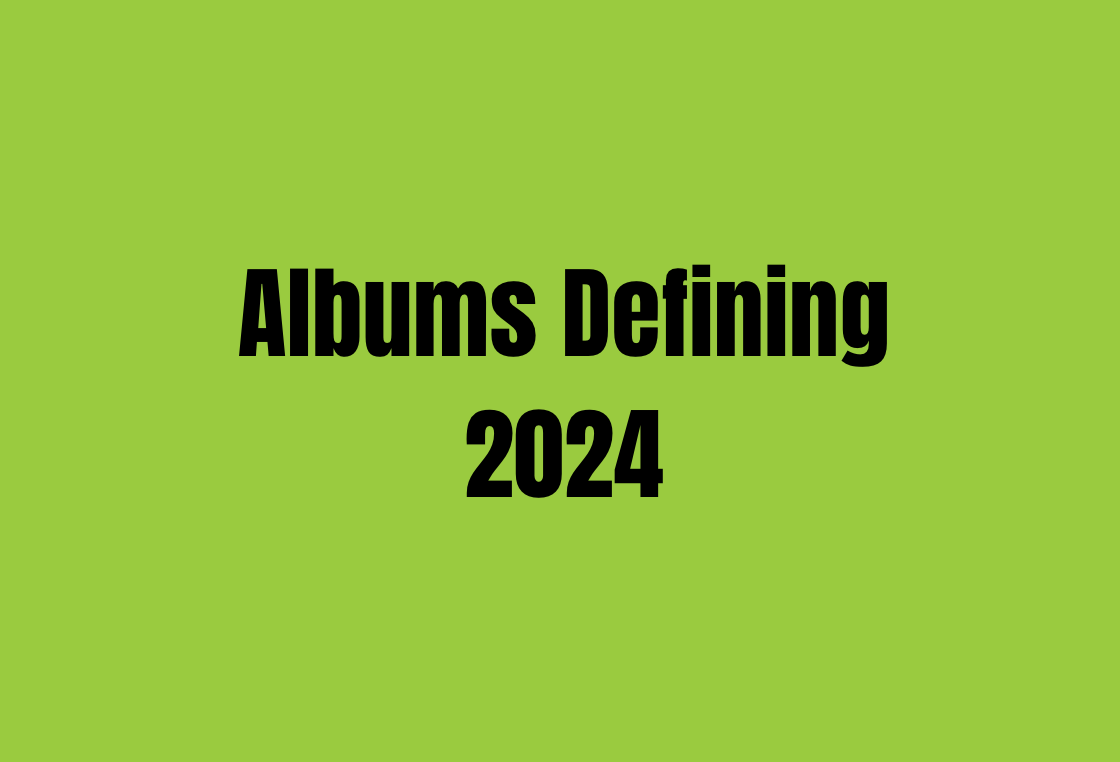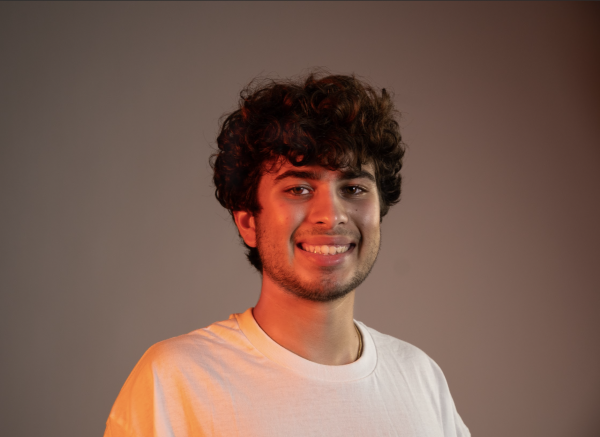In the world of teen dramas, no one’s ever just tired from math homework. They are running from cops, burying secrets in the woods and whispering betrayals under flickering neon lights. It is a universe where the hallways echo not with awkward hellos but with blood oaths and perfectly delivered one-liners.
These heightened, high-stakes portrayals have become a cultural obsession, especially among teens — but they come with consequences. From warped expectations to emotional dissonance, the gap between fiction and reality is wide.
“I think it gives people a false sense of what high school is like,” junior Gracie Asher said. “(Students) grow up watching these shows and think it’s going to be a lot more exciting, or dangerous or dramatic than it actually is.”
Shows like “Pretty Little Liars,” “Euphoria” and “Riverdale” have become staples of teen culture — not because they reflect reality but because they offer something even more enticing: an escape from it. While most television tends to exaggerate for effect, teen dramas in particular often skew toward the extreme — not just glamorous or adventurous, but dark, twisted and intense. The stakes are always life-or-death, the emotions always dialed to eleven.
“None of the characters really feel realistic,” Asher said. “They’re in high school technically, but everything they do is so heightened. It’s like a completely different world.”
That heightened world is one filled with secrets, scandals and stylized trauma. In these shows, teens speak in soliloquies and navigate plot twists with impossible grace. What is missing, often, is the mundane — the group projects, the daily uncertainty, the slow quiet process of growing up.
“These shows kind of force the characters to grow up a little too quickly,” drama teacher Janine Papin said. “There’s never a slow build-up. They don’t show the in-between moments — the figuring it out, the being unsure. And that’s the part of adolescence that’s actually real.”
Papin sees the disconnect clearly. In her theater classes, students are encouraged to communicate an authentic story through vulnerability, ambiguity and discomfort — emotions that get skipped over in many of the shows marketed to them.
“Teenagers are still trying to make sense of themselves, and I don’t think these shows allow for that,” she said. “Instead, it’s all extremes. You’re either completely broken or totally empowered. There’s no middle ground.”
But while the dramatization may be unrealistic, it isn’t entirely useless.
“I like how interesting it is,” Asher said of “Pretty Little Liars.” “The storylines are just so wild. There’s something new in every episode; it kind of gives you something to feel more emotional about.”
There is catharsis in the chaos. For teens wading through their own quieter versions of confusion and heartbreak, the shows can serve as both an exaggeration and a mirror. A place where the stakes are higher, the feelings louder — but the core emotions still ring familiar.
“I think teenagers are drawn to the drama because it gives them a space to project their own feelings onto something bigger,” Papin said. “They might not be hiding bodies, but they are dealing with real pressure. Watching these shows, they feel seen.”
And maybe that’s the appeal. Not realism but recognition. Not accuracy but intensity. The shows don’t reflect what high school is, but what it sometimes feels like: overwhelming, theatrical, terrifying and thrilling.
“It’s something to distract yourself from the stress of everyday life,” Asher said. “Like, I’m not living that life — but it’s fun to watch it happen to someone else.”
In the end, the fiction isn’t fooling anyone. Today’s teens know the difference between a story arc and a school day, but that doesn’t mean they’ll stop streaming. Because sometimes, the only thing better than surviving adolescence — is watching someone else survive it with better lighting and a dramatic soundtrack.




